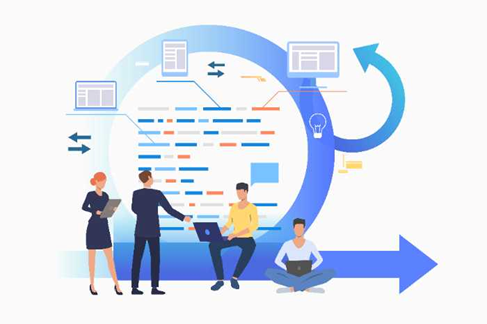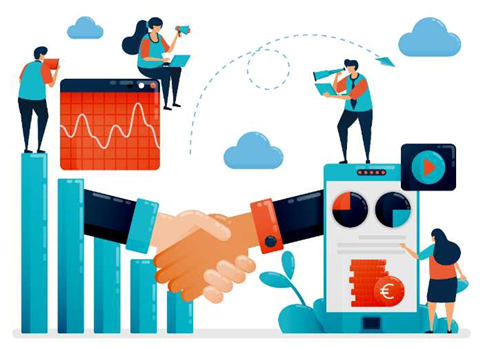MVP Development Guide: Benefits, Types, Setup & Cost | MVPDeveloper
MVP Development Guide: Benefits, Types, Setup & Cost
The MVP stands for a minimal viable product. It’s a certain type of software development process that focuses on releasing something as soon as possible with essential but limited features. MVPs are used to test out business ideas, discover a suitable company model, gather user feedback, estimate future earnings, and obtain financing.
MVP software generates enough capabilities to test the basic theories, and once product feedback from its first users has been considered following the initial version release, the full feature set is created and developed.

The most common 5 reasons for startups to fail with their MVPs:
1. You can’t just create an MVP product and put it out there without doing any customer research first. You need to understand what potential customers want and need, what kind of problems they have that your product could solve, and what they would be willing to pay for a solution.
2. Not having the right team in place is another common reason that startups fail with their MVPs. If you don’t have the right mix of skills and experience on your team, it will be very difficult to create a successful MVP.
3. Incorrect choice of tech stack and tools is another common pitfall. Startups often choose the wrong technology platform or tools for their MVP, which can lead to a lot of problems down the road.
4. Investing too much time and money into developing an MVP is also a common mistake. Remember that the goal of an MVP is to create something with just enough features to be viable, so don’t go overboard and try to include too many features.
5. Finally, many startups fail with their MVPs because they focus on the wrong things. Instead of focusing on creating something that is viable and solves a problem for customers, they focus on building something that they think is cool or that they think will be successful.
Benefits Of MVP development
Test your product on real market conditions: With an MVP, you can test your product on real market conditions and get feedback from actual users. This feedback is invaluable in helping you to improve your product and make it more successful.
Get to market faster: An MVP allows you to get your product to market much faster than if you were to try to develop a complete product from scratch. This is important because it allows you to start generating revenue and feedback sooner.
Lower development costs: Developing an MVP requires less time and money than developing a complete product, so your development costs will be lower.
Higher chances of success: Because you are able to get your product to market faster and test it on real users, your chances of success are much higher with an MVP than if you were to develop a complete product from scratch.
Better user experience: By releasing early and often, you can ensure that your product always has the latest features and is always up-to-date. This provides a better user experience for your users and keeps them coming back for more.
Greater flexibility: An MVP is more flexible than a complete product, so you can easily make changes and additions based on user feedback.
Increased engagement: By releasing early and often, you can keep users engaged and interested in your product.
Improved customer satisfaction: By constantly improving your product based on feedback, you can ensure that your customers are always satisfied with what you offer.
Types of MVP
There are several different types of MVPs that you can choose from, depending on your specific needs and goals. The most common types of MVP are:
The Concierge MVP: This type of MVP is often used when testing a new business model. With this MVP, you manually provide the service or product to customers until such time as you can automate it.
The Wizard of Oz MVP: This type of MVP is used when testing the feasibility of a new product or feature. With this MVP, the product or feature appears to be automated, but in reality, it is being done manually by someone behind the scenes (hence the name “Wizard of Oz”).
The Landing Page MVP: This type of MVP is used to test whether there is interest in a new product or feature. With this MVP, you create a landing page that describes the product or feature and allows users to sign up for more information.
The Single-Feature MVP: This type of MVP is used to test a new feature. With this MVP, you release a product with only one new feature, to see if users are interested in it.
The Prototype MVP: This type of MVP is used to test the feasibility of a new product or feature. With this MVP, you create a prototype of the product or feature and allow users to interact with it.
The Social Media MVP: This type of MVP is used to promote a new product or feature. With this MVP, you use social media to generate interest in the product or feature and get people talking about it.
The Email List MVP: This type of MVP is used to test the feasibility of a new product or feature. With this MVP, you create an email list for the product or feature and allow users to sign up for it.
Setup the MVP
1. Define the business goals and objectives that you want to achieve with your MVP.
2. Identify the key features that are necessary to achieve those goals and objectives.
3. Create a prototype of the product or feature using whatever tools you have available (e.g., paper, wireframes, mockups).
4. Test the prototype with potential users to get feedback and make sure it is usable.
5. Develop the MVP using the feedback from the prototype testing.
6. Launch the MVP and start gathering data on how users are interacting with it.
7. Analyze the data and use it to improve the product or feature.
MVP Development cost
The cost of developing an MVP depends on a number of factors, including the type of MVP you choose, the features you include, and the resources you have available. Generally speaking, you can expect to spend anywhere from $5,000 to $50,000 on an MVP.

If you are looking to develop an MVP, we can help. We have a team of experienced professionals who can help you with every step of the process, from defining your goals and objectives to launching your MVP. Contact us today to get started.

